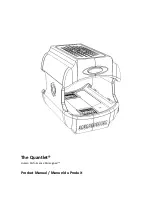
Precautions When Using Batteries
• Never use any charger or battery that is damaged in any way
• Use the battery only for its intended purpose
• If left unused, a fully charged battery will discharge itself over time
• Always charge in or as close to room temperature (20 degrees Celsius) as extreme temperatures will affect the charging capacity of the batteries
• If Batteries will not recharge (batteries provided have a recharge life of 800 times), DO NOT ATTEMPT to change the batteries yourself. Instead contact your local service
provider.
Electronic Devices
Most modern electronic equipment is shielded from radio frequency (RF) signals. However, certain electronic equipment may not be shielded against the RF signals from
the units.
Pacemakers:Pacemaker manufacturers recommend that a minimum of 15cm should be maintained between the units and a pacemaker.
Hearing Aids: Some wireless technology can interfere with some hearing aids. In the event of such interference, you may wish to consult your hearing aid manufacturer to
discuss alternatives.
Other Medical Devices
If you use other personal medical devices, consult the manufacturer of your device to determine if it is adequately shielded from external RF energy. Your Physician may be
able to assist you in obtaining this information.
Vehicles
RF signals may affect improperly installed or inadequately shielded electronic systems in motor vehicles. Check with the manufacturer or its representative regarding your
vehicle. You should also consult the manufacturer of any equipment that has been added to your vehicle.
Potentially Explosive Atmospheres
Switch of all units in any area with a potentially explosive atmosphere and obey all signs and instructions. Sparks in such areas could cause an explosion or fire resulting in
bodily injury or even death.
Users are advised to switch off all units while at a refueling point (service station). Users are reminded of the need to observe restrictions on the use of radio equipment in
fuel depots (fuel storage and distribution areas), chemical plants or where blasting operations are in progress.
Areas with a potentially explosive atmosphere are often but not always clearly marked. They include below deck on boats, chemical transfer or storage facilities, vehicles
using liquefied petroleum gas (such as propane or butane), areas where the air contains chemicals or particles, such as grain, dust or metal powders, and any other area
where you would normally be advised to turn off your vehicle engine.
HEALTH AND SAFETY
HEALTH AND SAFETY
©
2009
Fusion
Sport
Pty
Ltd,
All
Rights
Reserved
Page
13
















































